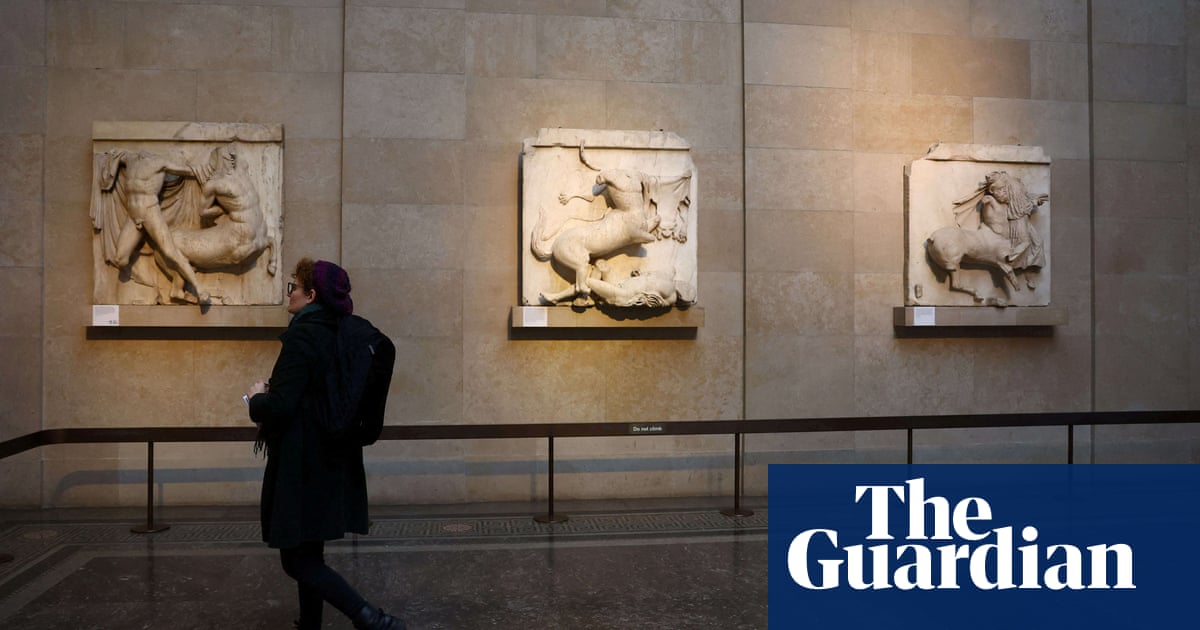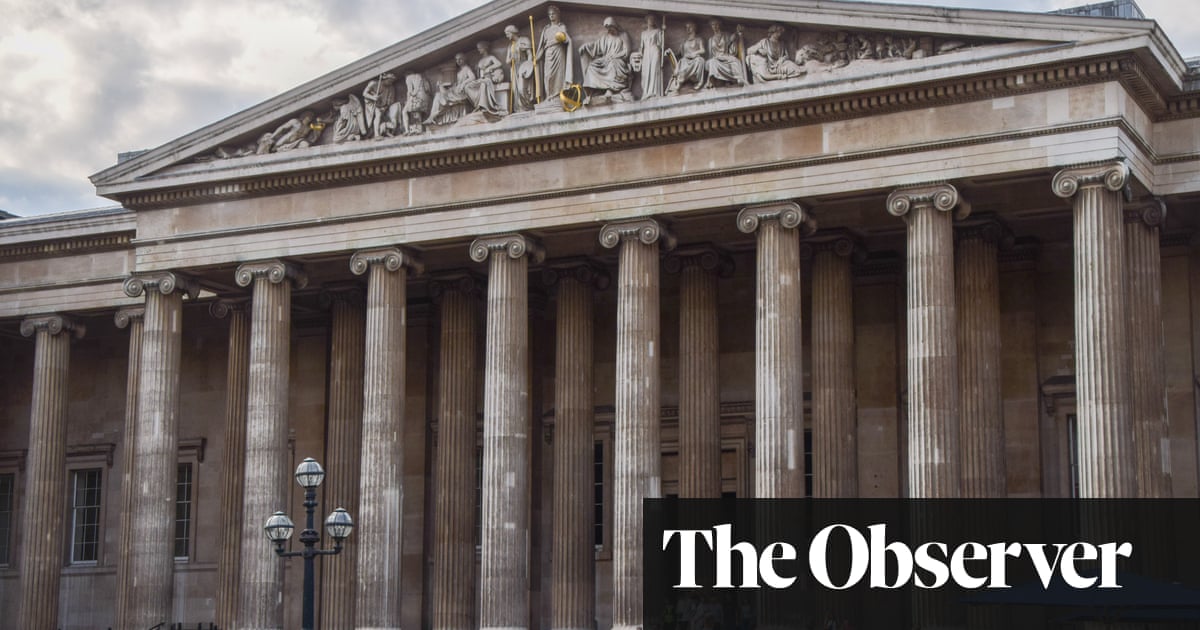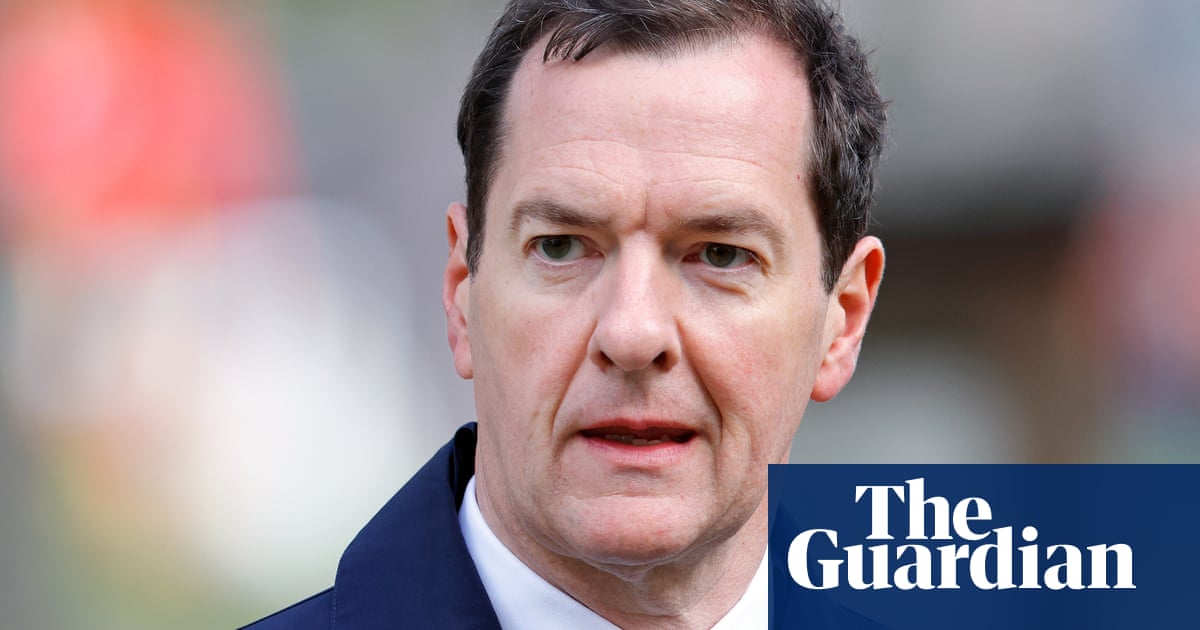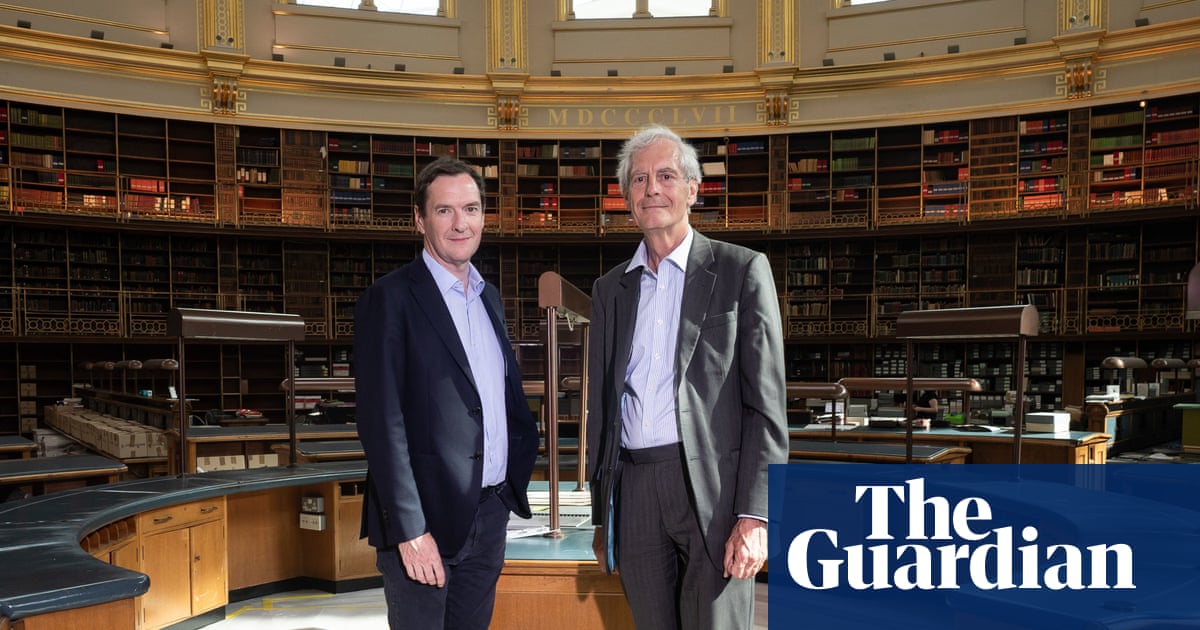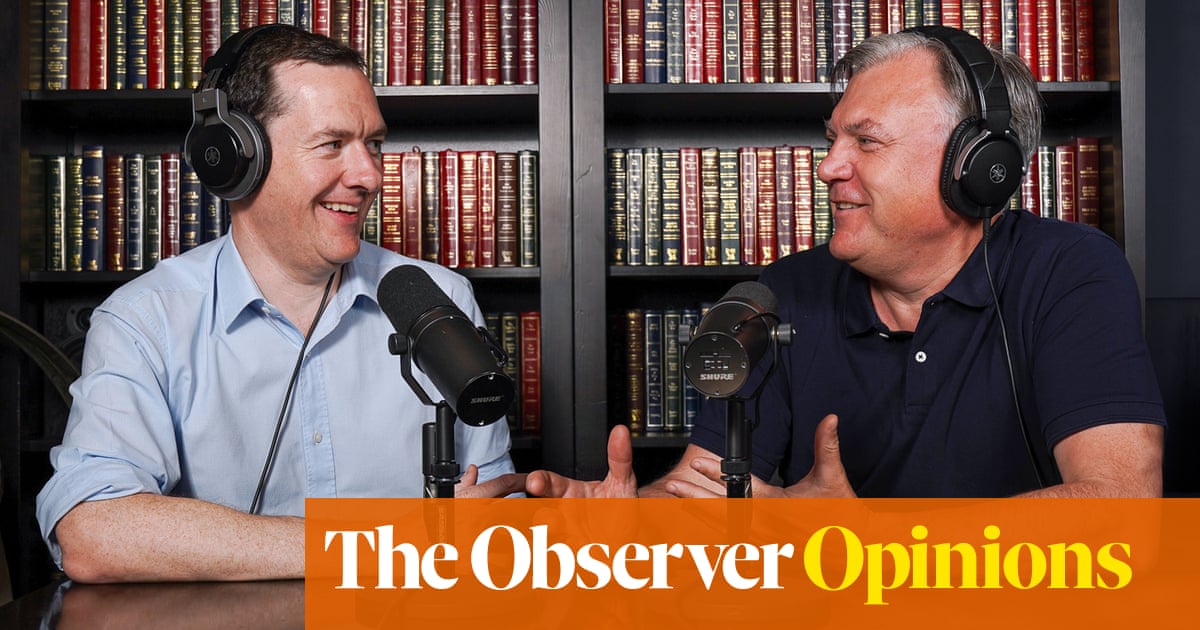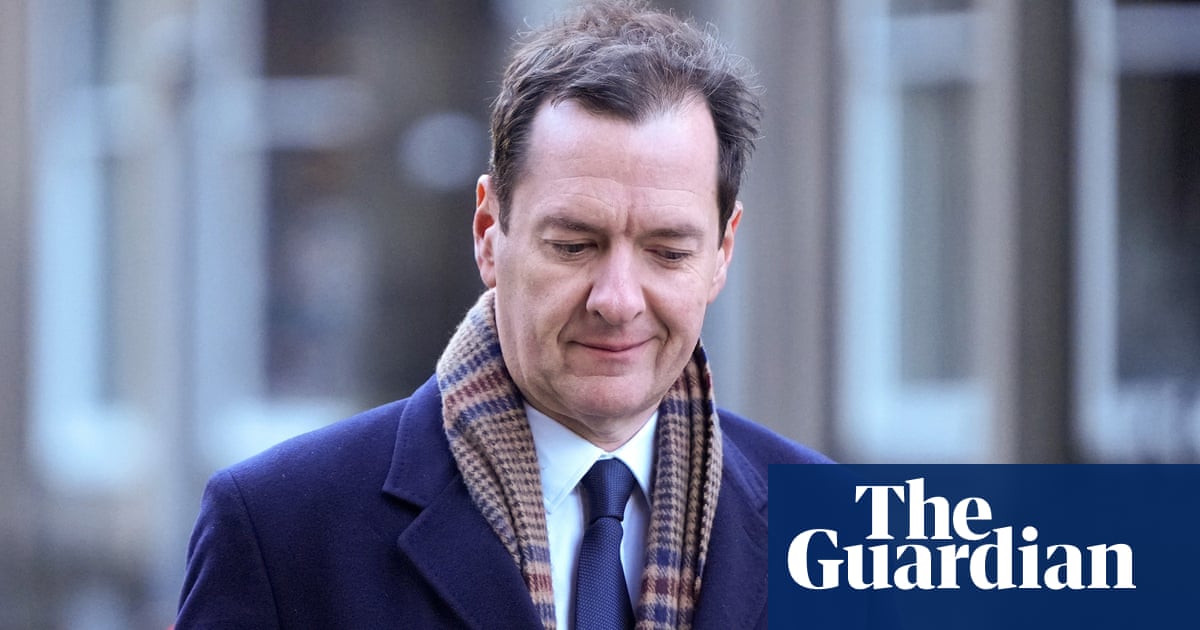
Labour has condemned the appointment of the former chancellor George Osborne, who presided over swingeing austerity cuts to England’s arts and museums budgets, as the new chair of the British Museum.
The museum announced on Thursday that Osborne would join its board of trustees in September and succeed the former Financial Times editor Sir Richard Lambert as chair in October.
Labour’s Alex Sobel, the shadow heritage minister, pointed to the large number of jobs Osborne had accumulated since he was sacked as chancellor by Theresa May in 2016.
“George Osborne was the architect of devastating cuts to funding arts and culture,” said Sobel. “He has enough jobs already, he doesn’t need another.”
The writer Michael Rosen asked: “How do people get these jobs? How did they arrive at him? Did they just ring him up? No one’s ever rung me to offer me a job like that. I didn’t invent austerity, though.”
Osborne was the architect of austerity policies that had a profound effect on England’s cultural life. His 2010 spending review delivered a 30% cut to England’s arts budget and a 15% cut to national museums.
Since leaving government Osborne’s jobs have included editor of the Evening Standard and a £650,000-a-year role as adviser to BlackRock, the world’s largest fund manager.
In February he announced he was dropping his portfolio career to become a full-time banker as a partner at the investment bank Robey Warshaw. He remains chair of the Northern Powerhouse Partnership.
Osborne was chosen for the unpaid museum role by the board of trustees and not the government.
Nevertheless, the appointment comes amid growing concern that ministers are trying to manipulate the governance of Britain’s national museums to match their agenda.
In the spring, Sir Charles Dunstone, the founder of Carphone Warehouse, resigned as chair of Royal Museums Greenwich after, it was reported, the culture secretary, Oliver Dowden, refused to reappoint trustee Dr Aminul Hoque, an education academic whose work advocated “decolonising” the curriculum.
Downing Street rejected the classicist Mary Beard as a trustee of the British Museum because, it was said, of her pro-European views. She was later voted on to the board by trustees themselves.
The make-up of the board matters, as the museum tries to navigate a course which involves increasing calls for it to end BP sponsorship of exhibitions, and demands for it to repatriate looted artefacts, not least Benin bronzes which some European museums have begun to hand back.
There is also the question of how museums interpret objects and whether statues and busts of slave-owners should be kept. Dowden insists museums need to retain and explain, and it would be a brave board of trustees which chose a chair who went against that.
The Egyptian writer Ahdaf Soueif resigned as a British Museum trustee in 2019 because of its “immovability on issues of critical concern to the people who should be its core constituency: the young and the less privileged”.
Osborne said he was “absolutely thrilled” to be joining the museum. “All my life I have loved the British Museum. To my mind, it is quite simply the greatest museum in the world. It’s a place that brings cultures together and tells the story of our common humanity.
“I hope to bring my experience, energy and passion to this incredibly exciting role.”
Minouche Shafik, a former deputy governor of the Bank of England who became a crossbench peer in the political peerages list of 2020, is deputy chair of the trustees and led the chair search committee.
She said: “George Osborne has a longstanding commitment to culture, both personally and in his various public roles. The trustees look forward to working with him to bring the museum to ever-larger audiences and to expand its contribution to public understanding of our collective history.
“He brings enthusiasm for the museum combined with extensive national and international networks and experience with finance and fundraising on a global scale.”
The appointment comes as the museum works on its masterplan to make the displays more coherent and interconnected, described by its director, Hartwig Fischer, as “the biggest transformative project in our history”.
Fischer said he was “very happy” to welcome Osborne, adding he “knows the museum well and values the trust the museum enjoys around the world”.
“He understands the active role the British Museum is playing in the recovery of the country, creating opportunities for everyone to discover the collection as their own – onsite, through loans to their local museums and online.”




